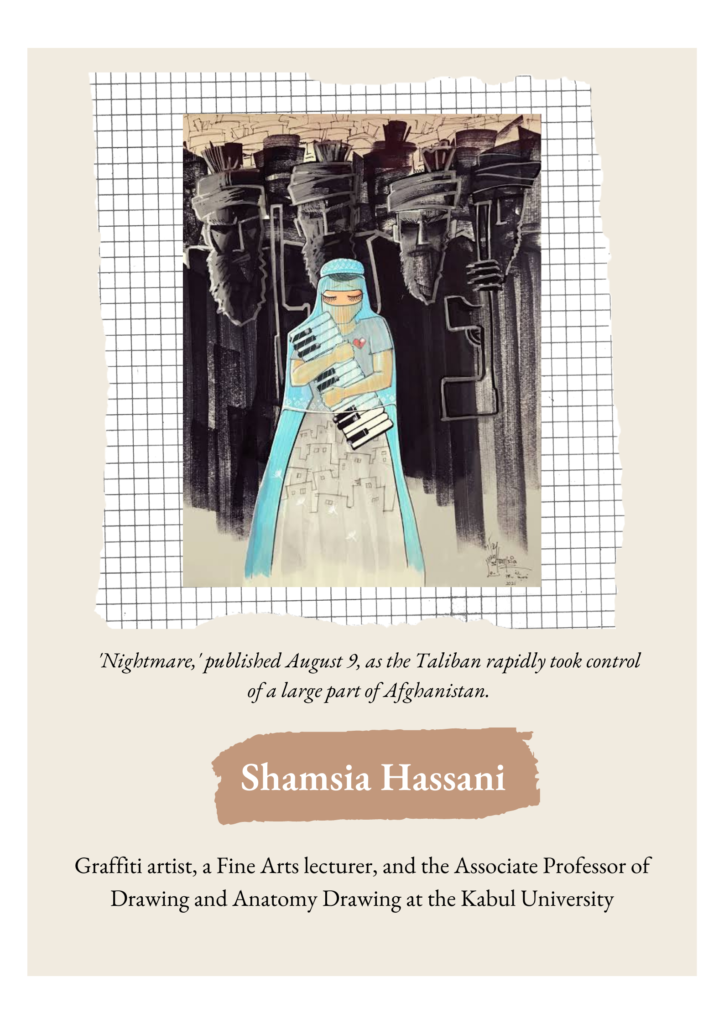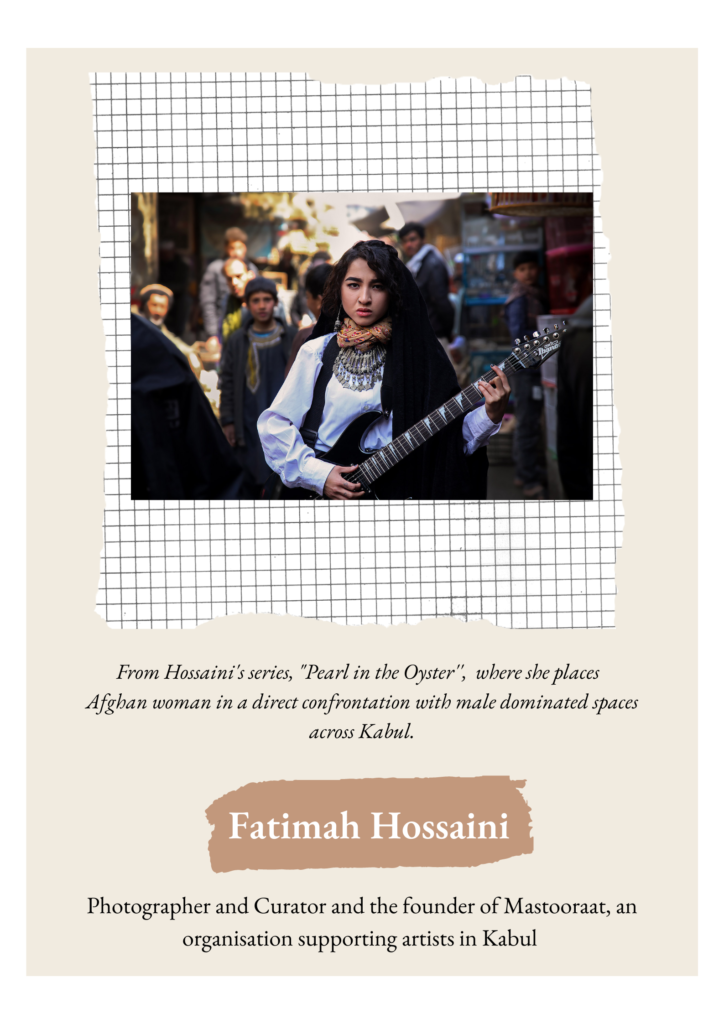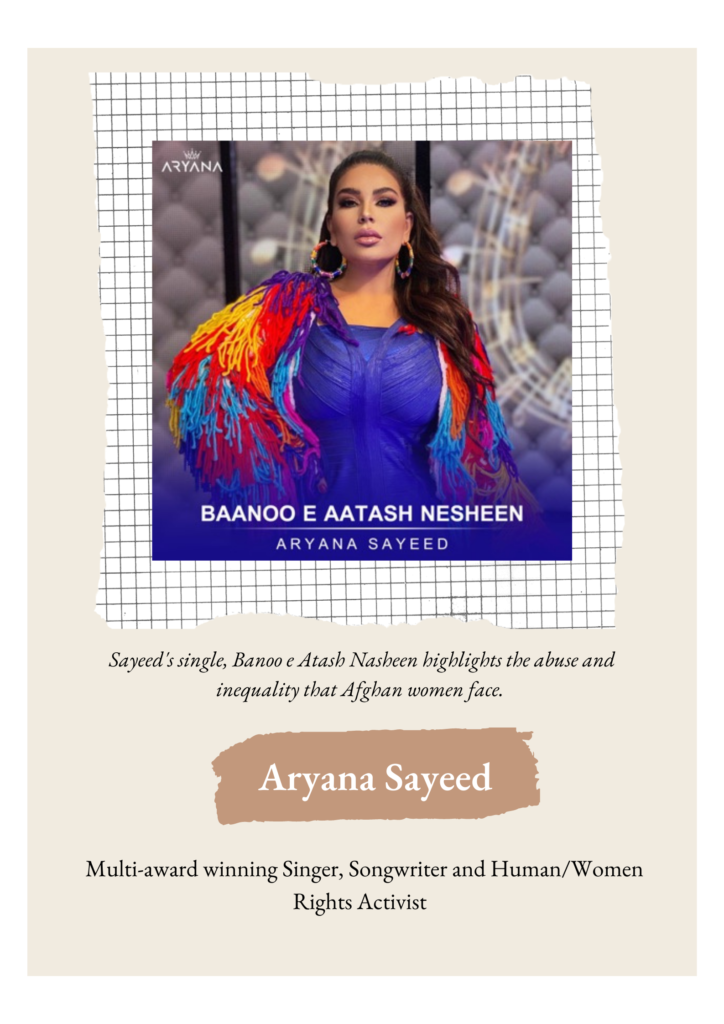Blog
Engendering Adda
This new section on WISCOMP’s Log-in Gender is envisioned as an Adda, a space for meeting, meaningful conversations, dialogic engagement and critical reflections. Adding ‘engendering’ or ‘feminist’ to Adda is an attempt to reclaim this space and empty it for questioning, reflecting, deconstructing and doing gender.
Through this new section, we hope to engage in conversations through book reviews, film reviews, documentaries, videos, interviews, opinion pieces or even guest contributions.
Shamsia Hassani

Shamsia Hassani’s journey as a graffiti artist began with her exploration of the ways in which art could be put to use to cover up the physical reminders of war. The destroyed walls and buildings acted as her canvas, making her art accessible to ordinary people for whom museum trips or exhibitions is a rarity.
Despite the threat of violence and harassment, it was Hassani’s courage, conviction and belief in her work that kept her going. Art for her has always been a tool of resistance— a way of protesting against forgetting the atrocities that women face as a consequence of war. By painting images of women in public spaces, her art resists cultural traditions of isolation and oppression and encourages people to see women in society differently.
It was in 2011 that Hassani developed her trademark fearless female character that would continue to appear in all her future projects. Using the blue silhouette of the burqa, she created a female figure who would transcend the domestic space as she moves freely around the city. Much like Hassani, the woman character occupies roads and buildings, singing a song of resistance from the very spaces where her entry is restricted. She is modelled on Afghan women, representing their struggles of living as women in a patriarchal society.
One particular artwork where this representation is striking is the graffiti titled ‘nightmare’, released less than a week before the fall of Kabul. This powerful image of a burqa clad woman surrounded by shadow figures was very soon posted and reposted on various platform as people discussed the fate of women under the rule of Taliban. The woman in ‘nightmare’ is painted with her eyes closed and her mouth shut, but she holds a musical instrument—signifying self-expression and ownership of her voice. The musical instrument is juxtaposed with the guns of the male figures representing. ‘Nightmare’ appears to be a testament to not only the strength and resilience of Afghan women but also to Hassani’s ability to continue to envision hope, to proclaim light and life, and to encourage and remind those who see her work that the power of a woman’s voice is not easily silenced, even when her mouth is closed.
Her thought-provoking and nuanced art works have found her a place in Foreign Policy’s 2014 top 100 global thinkers list. Moreover, her life story has been included in the second volume of Goodnight Stories for Rebel Girls, a best-selling collection of portraits of influential women from around the world.
Sources
- https://thewire.in/women/shamsia-hassani-the-afghan-female-graffiti-artist-capturing-womens-voices
- https://www.outlookindia.com/website/story/entertainment-news-shamsia-hassani-the-afghan-female-graffiti-artist-capturing-womens-voices/392021
- https://www.theguardian.com/global-development/2021/oct/23/we-planted-a-seed-the-afghan-artists-who-painted-for-freedom
- https://artradarjournal.com/tag/shamsia-hassani/
Fatimah Hossaini

Fatimah Hossaini is an Afghan artist, photographer, curator, exhibitioner and a fashion photographer in Afghanistan. She is the founder of Mastooraat Organisation which works for women, art, youth and peace. Through her photographs, she pushes the boundaries on cultural norms in the country. Art for her is a medium through which she can convey the beauty of her country—its culture, people, landscape, food and more. Her work is interestingly different from her contemporaries as instead of capturing her country destroyed by years of war, she chooses to focus on the beauty that still survives and hopes to provide hope and strength to her fellow Afghans to remember that their country is not only made up of war and misery.
Women have also been at the centre of her work. Through her work, she hopes to showcase beauty of Afghan women to the world, highlighting their strength instead of their weaknesses. In her photography series called “Pearl in the Oyster”, she celebrates the progress that women have made and continue to make in terms of liberation. The photographs depict powerful and bright Afghan women who occupy male dominated public spaces in defiance of the patriarchal order. The series has been shot along Chicken Street, a street that is a common part of Kabul’s everyday life. Fatimah believes that her series will will highlight the beauty of femininity and capture the resilience of Afghan women alongside forgotten cultural objects that are an important part of Afghanistan’s plurality and rich history.
Sources
Aryana Sayeed

Aryana Sayeed, one of Afghanistan’s most well known singers, braves death threats and endures scrutiny every time she returns to her birthplace to perform. She is not only a popular singer, but is also an advocate of women’s rights and a voice for the hardships that Afghan women undergo. Despite the threat to her life, she continuously returns to her country to inspire and encourage the women in Afghanistan and to share with them her music, a blend of pop and traditional songs. She has symbolically performed at the very same football field where women under Taliban rule, between 1996-2001, were executed as a measure to encourage women to continue hoping for a better future for their country, one where gender equality is the rule.
It is the feminist message in her songs that has catapulted Sayeed into the eye of controversy back home in Afghanistan, she explains. She describes the themes of her music as a balance between campaigning for the rights of Afghan Women and pure entertainment. She has dedicated her musical career to gender equality to Afghanistan by singing songs in Dari and Pashto that are accessible to people, despite their ethic identity. Her music videos such as “I Am A Woman” and “Champion” have garnered a million views and her song “Banoo Atash Nesheen” meaning “The Lady of the Land Fire” became the first ever Afghan music video to be featured on MTV’s Rebel Music Series and was featured on BBC World’s Impact.
Source
